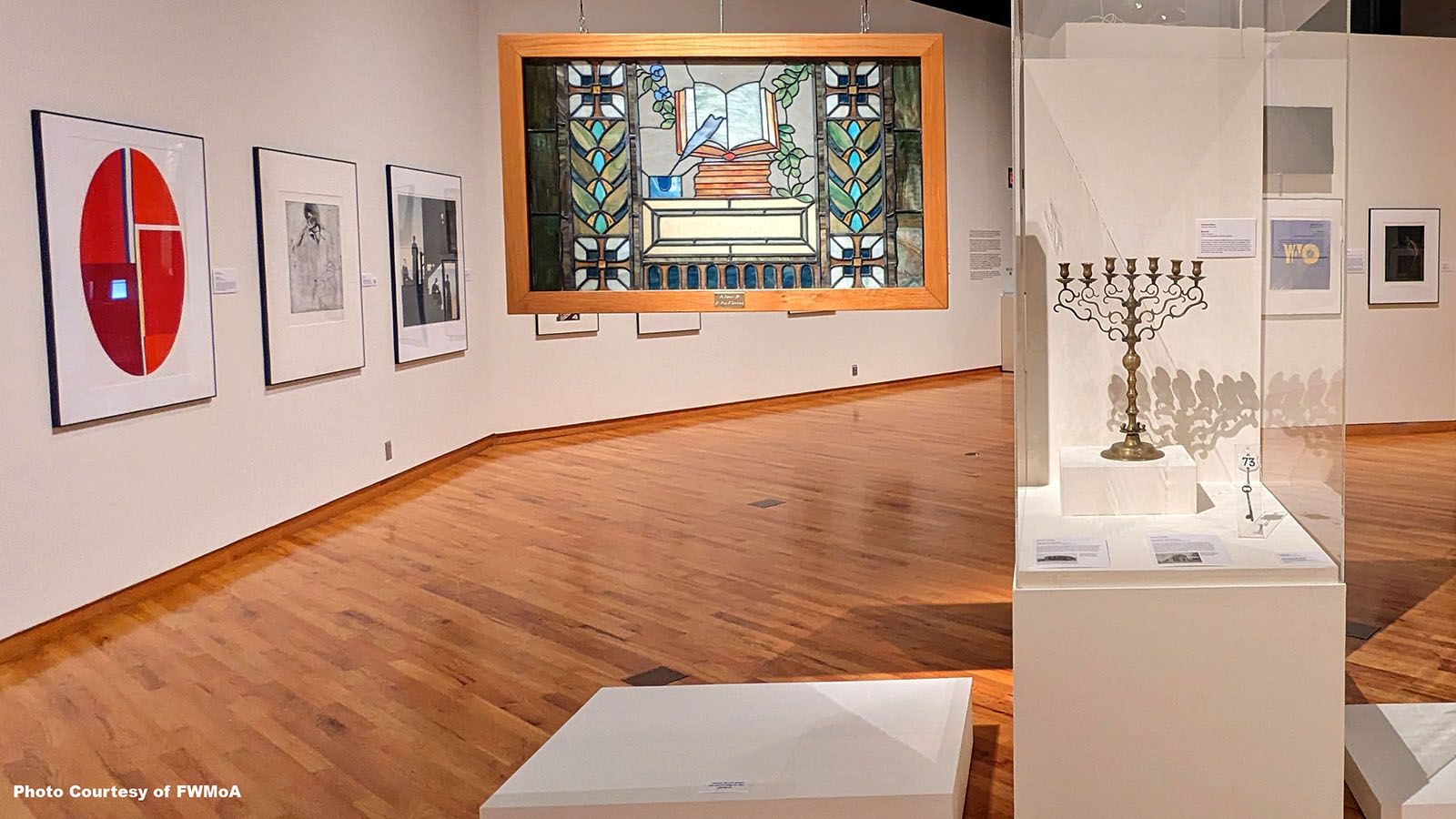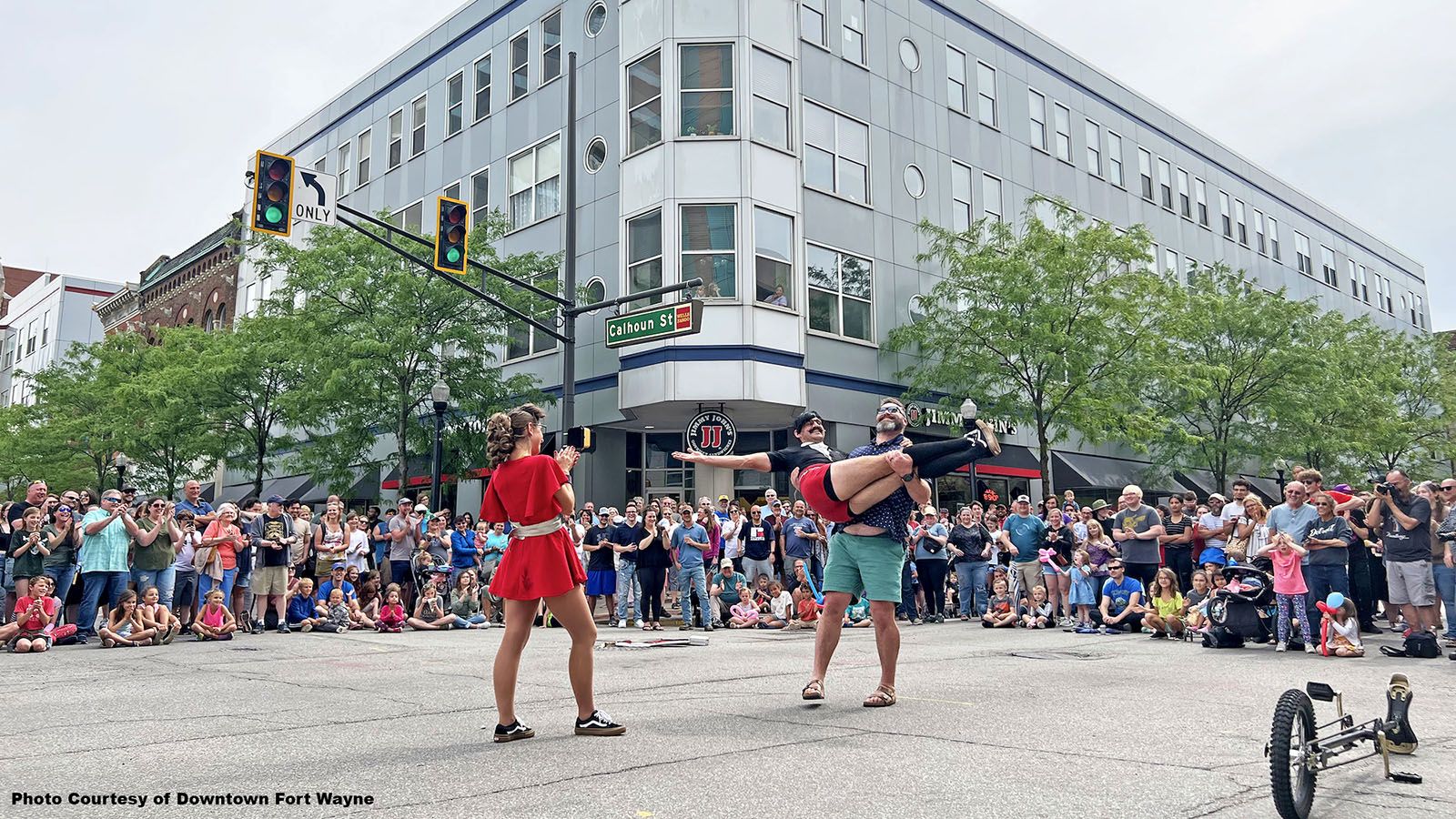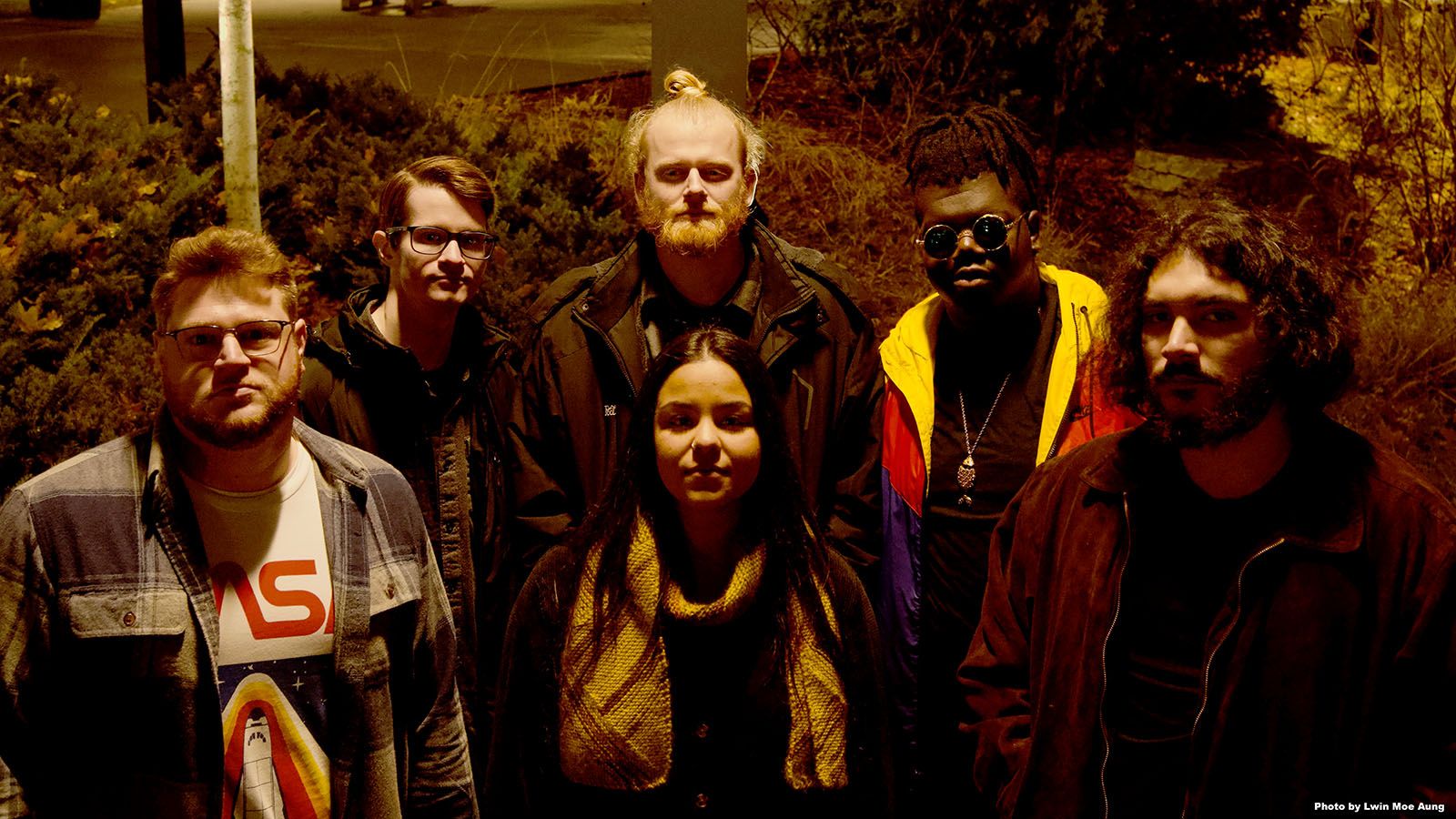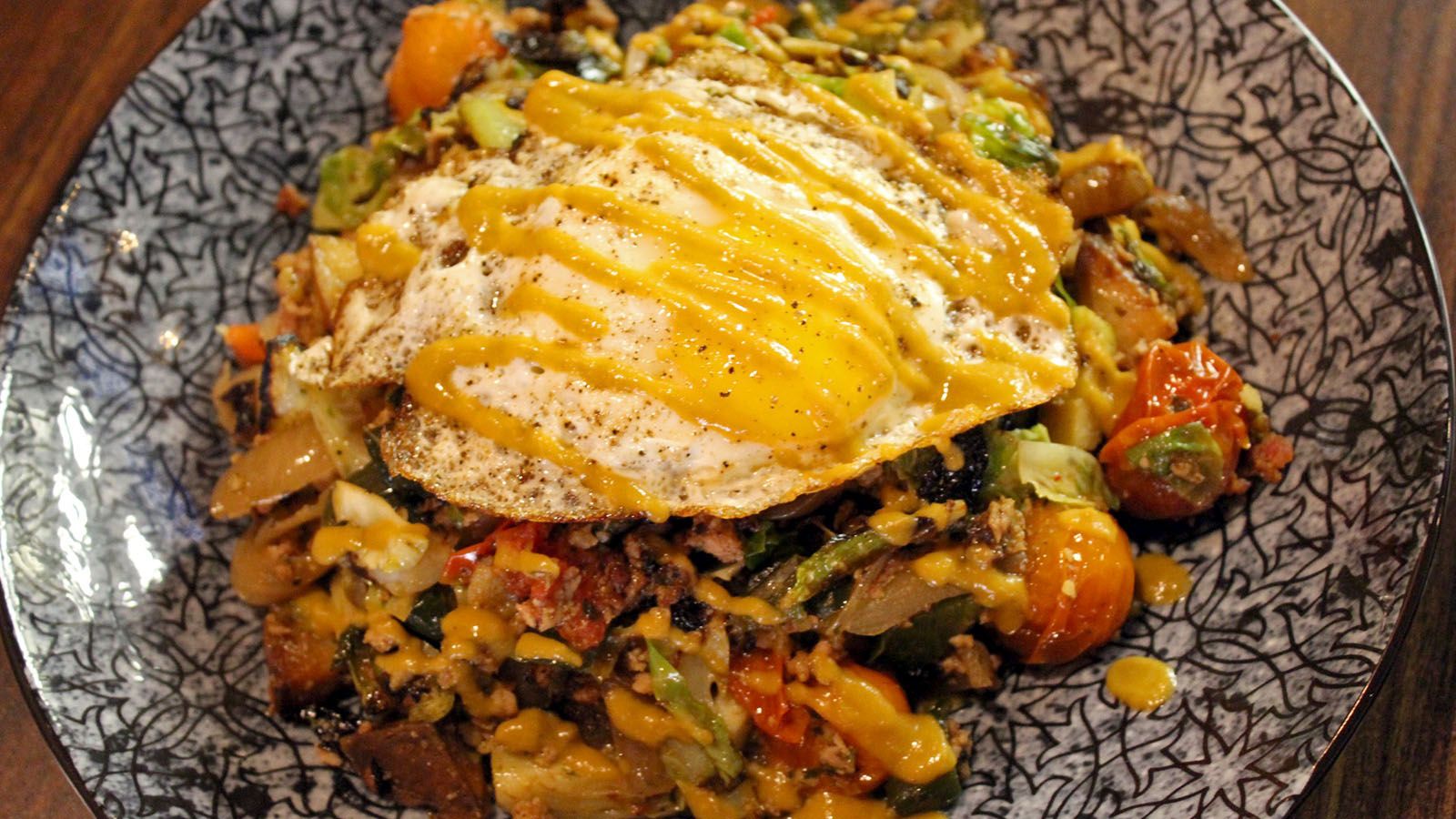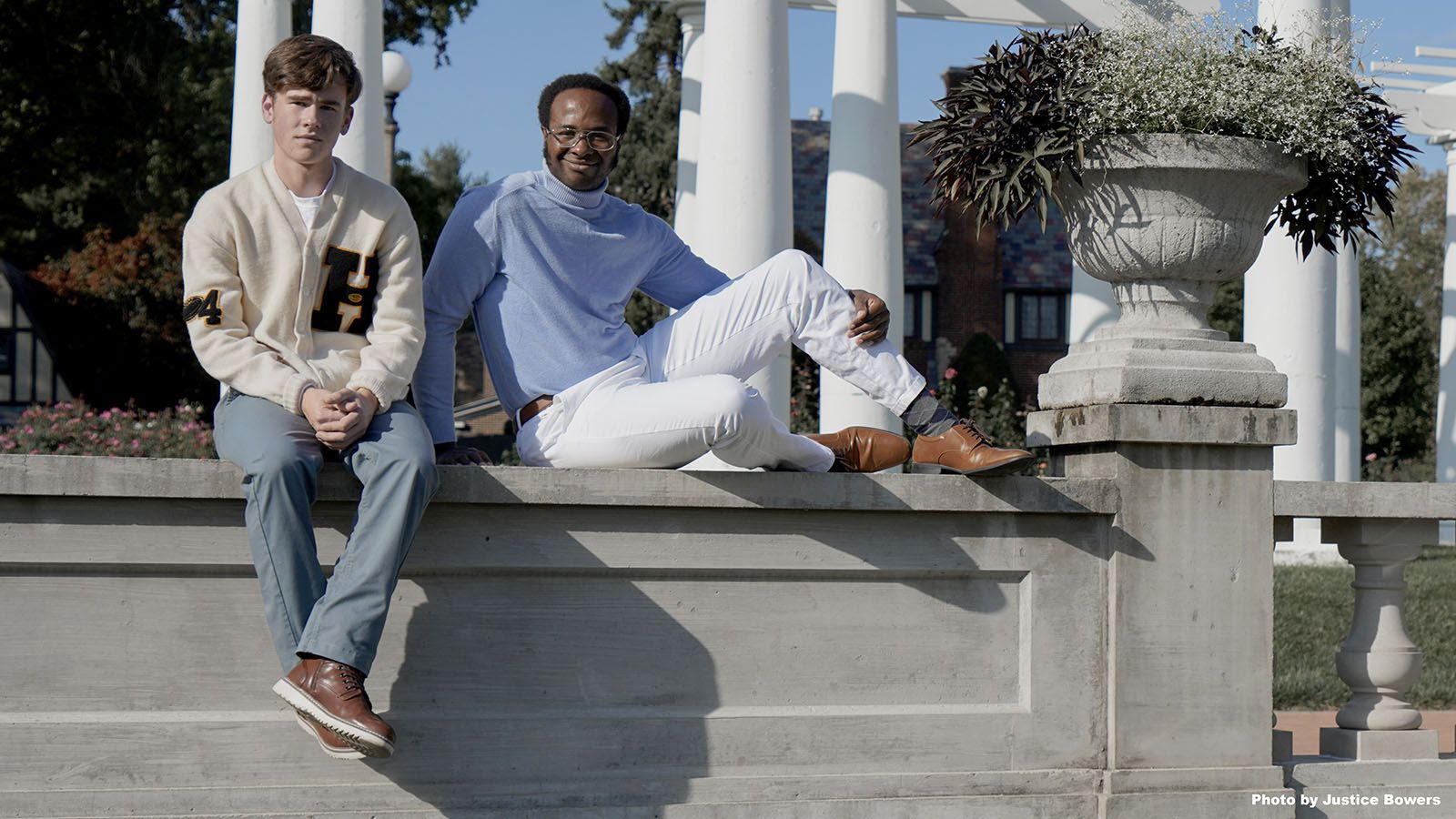Fort Wayne Museum of Art welcomes the whole community. With several galleries and rotating exhibitions, every time you visit, there’s much to see and learn.
In 1848, Congregation Achduth Vesholom, also known as “The Temple,” was formed in Fort Wayne as the first Jewish congregation in Indiana. It’s still going strong today. For their 175th anniversary, FWMoA is presenting Jewish History and Art Illuminated: 175 Years of Congregation Achduth Vesholom which opened Nov. 11 and runs through Jan. 28.
The exhibition features works from the museum’s permanent collection, chosen from among 70 Jewish artists, many world-renowned. These are brought together with items of Judaica and art from The Temple and a few works by local artists that illuminate their faith community and tie the themes to Fort Wayne.
Taking a tour
Jewish History & Art illuminated: 175 Years of Congregation Achduth Vesholom
10 a.m.-6 p.m. Tuesday-Wednesday, Friday-Saturday
10 a.m.-8 p.m. Thursday
Noon-5 p.m. Sunday
Fort Wayne Museum of Art
311 E. Main St., Fort Wayne
$8-$10 · (260) 422-6467
“Achduth Vesholom” is Hebrew for “unity and peace.” Achduth Vesholom is a Reformed congregation, the denomination of Judaism that came into being in the U.S. In 2019, they merged with another group that has been worshiping in Fort Wayne many decades, B’nai Jacob, a synagogue in the Eastern European Conservative tradition.
At the museum, I was given a tour by Sharon Eisbart, the exhibition’s co-curator and a member of the congregation. She and her husband, Ben, came to Fort Wayne in 1972, she as a head-start schoolteacher and he as the new director of the Fort Wayne chapter of the Jewish Federation, a nationwide, secular philanthropic group. Today, Sharon operates a business that brokers art to corporate offices.
“People ask the question, ‘Wait a minute, what’s Jewish art?’ ” she said. “There are artists who are Jewish, but there’s no one kind of Jewish art. But there are themes in art that reflect the Jewish experience, hence the history of 175 years of Achduth Vesholom.”
When you enter the exhibition, you see a massive Expressionist painting, The Burial, by Larry Rivers (1923-2002), acquired by the museum in 1958. Dark and moody, it depicts a minyan of Jewish men, along with family members and children, saying prayers over the coffin of a beloved grandmother. Eisbart explained a synagogue is at its essence a burial society, so it’s a fitting place to start.
Themes
Throughout the exhibition, you can see works from the 20th and 21st centuries that illustrate seven themes.
Illumination discusses the congregation’s beginnings and role in the Fort Wayne community.
“The idea of light and Jewish history is one and one,” Eisbart said. “You will see, when we go in here further, an eternal light that came from B’nai Jacob, the congregation that merged with Achduth Vesholom.
“Every synagogue everywhere in the world will have an eternal light, and it is symbolic of God’s light shining down on us. So, the idea of light and illumination is also another keystone of this exhibit and of Judaism.”
Immigration reflects the many waves of Jews, including refugees, coming to Fort Wayne.
Learning shows the love of education.
Torah centers on their devotion to studying the first five books of the Scriptures.
Synagogues features paintings alongside ceremonial objects from Achduth Vesholom.
Reactions represents art in response to world events: the Holocaust and the founding of the state of Israel.
Changes reflects movements in Jewish life in our own society.
Assortment of artists
Along the way, you learn about famous artists, interwoven with the history of Achduth Vesholom. Since 1859, it has had five locations and 23 rabbis. The current Temple opened in 1961 at 5200 Old Mill Road. Meir Bargeron serves as rabbi.
As for the artists, a standout is a couple of lithographs by Russian-French artist Marc Chagall (1887-1985), perhaps the best-known Jewish artist of the modern era. Others are works by his American contemporaries William Gropper, Ben Shahn, and Abraham Rattner.
Artist Irving Amen is represented by two lithographs with bold primary colors and subtly etched details that show children studying in a family setting.
There’s one small, modest image in the Torah section that captured my eye: An untitled etching by Ira Moskowitz (1912-2001) of a group of traditionally dressed Jewish men with long beards dancing joyously to a klezmer band.
In the center of the exhibition room is a video about local sculptor Cary Shafer. You need to go out to the garden in the back to see his stone arch, built in 2012.
I could go on with names, but it’s more meaningful to see the art itself to get the context.
Jewish role in city
Dr. Wendy Soltz, director of the public history program at Ball State University, is co-curator. Her Indiana Synagogue Mapping Project surveyed 66 synagogues built across Indiana from 1865.
“The Jewish community has been instrumental in establishing some of Fort Wayne’s notable businesses,” Soltz said in phone interview. “Then there’s civic involvement. In the late 1970s and 1980s, there were 12 members of the congregation holding different offices within the city government: school board and city council members.
“The Jewish community has been involved in both establishing the business infrastructure in Fort Wayne as well as been instrumental in volunteer roles and civic life. And then also, it has offered religious diversity.
“I feel like the Midwest in general gets a bad rap” for being homogeneous, she added. “If you look at the history of the Midwest and Fort Wayne in particular, you’ll see religious diversity even today. So now we can claim that and brag about our religious diversity and tolerance. I think that’s something we should be proud of.”
Soltz and Eisbart tell us that groups are welcome to visit The Temple and see their own small museum, which has even more to say about the Jewish community. Go to templecav.org to schedule a tour.
More reasons to visit
But wait, there’s much more that you can see on the same day you visit Fort Wayne Museum of Art.
The museum is a year into its dazzling, brilliant Studio Glass permanent exhibition and is always bringing out new pieces. Then there’s the large Beyond Face Value portrait collection, which spans 500 years, and gives everyone the chance to draw their own self-portrait. That also closes Jan. 28.
Next up will be the Scholastic Art and Writing Awards, Feb. 10-April 7, with hundreds of pieces of art from northern Indiana schoolchildren.
From March 9-May 19, Lucky Monsters celebrates visiting Korean-American artist Jiha Moon.
 Submit Your Event
Submit Your Event